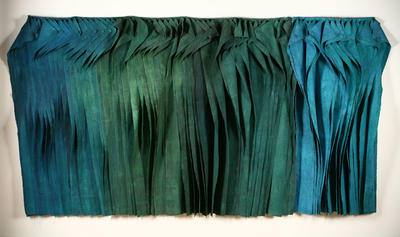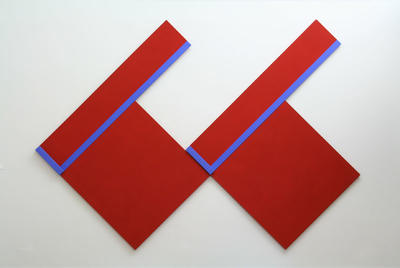Untitled two-part painting
-
Don Peebles
b.1922
d.2010

Title
Untitled two-part painting
Details
| Production Date | 1978 |
|---|---|
| Collection(s) | Collection Govett-Brewster Art Gallery, New Plymouth. Purchased from Dorothy Atmore Bequest in 1978. |
| Accession Number | 78/34 |
| Media | Acrylic on canvas |
| Measurements | 2270 x 65mm and 1380 x 2030mm |
About
Don Peebles was one of the founding fathers of abstract art in New Zealand. During a painting career of over 60 years, Peebles forged an art practice characterised by curiosity and dogged determination. His paintings emerged from an intensive process of research and experimentation in the studio, where canvases were painted, reworked, mulled over, cut up and cannibalised into new works, and sometimes, finally, let out into the world. Untitled two-part painting explores some of the central concerns of modernist painting — the grid form, dark and light, the tension between surface and the illusion of depth — while retaining the energetic curiosity of its conception. What happens to this design when it is on a canvas this shape? And what about this shape?
Peebles abandoned the frame altogether for Untitled two-part painting, allowing the two pieces of the painting a more informal relationship. Departing from the rigidity of the traditional triptych or diptych with its uniformly sized parts, Peebles’ painting comes together in a way which is less a business meeting and more a relaxed conversation over a glass of wine. Without the stiffness of the frame, the materiality of the canvas also comes into play. Heavy with paint, it sags away from the wall with the ripple and movement peculiar to fabric. Warp and weft also exist in the horizontals and verticals of Peebles’ painted grid. There is a kind of elasticity in the way that the lines distort, drawing together and apart like the threads of a fabric that has been stretched and pulled.
Peebles, a restless innovator, played with the materials of his trade, coaxing a visual language out of them. In his works, the rigid scaffolding of painting is taken apart, softened, analysed and reconfigured.


